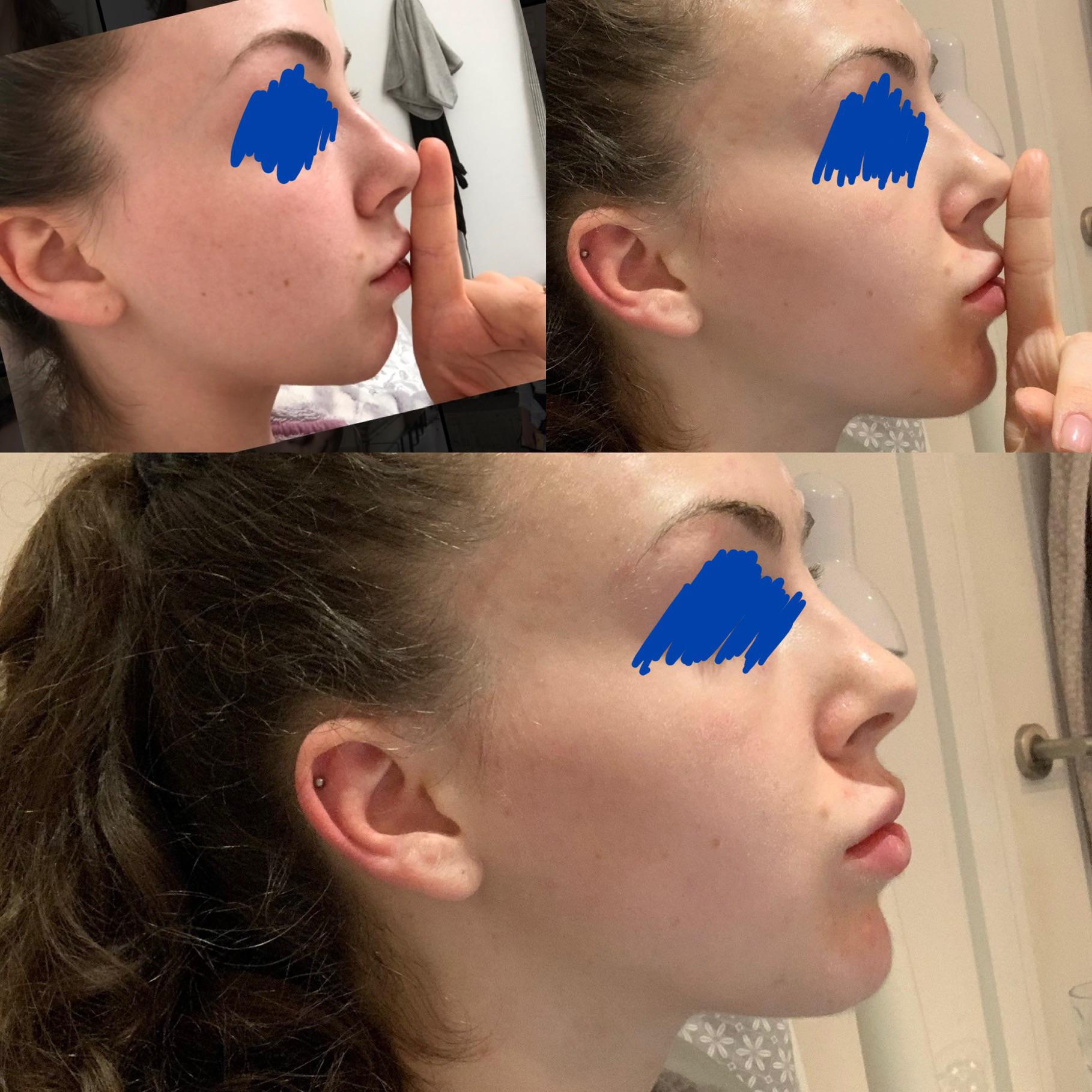Is Mewing Natural? The Truth & How To Practice It
Is mewing natural? The practice of mewing, which involves consciously positioning the tongue against the roof of the mouth, is a topic of considerable debate, with proponents claiming it's a natural way to improve facial aesthetics and detractors questioning its scientific basis and potential for harm. The core of the discussion revolves around whether this technique aligns with the body's innate processes or represents a forced manipulation.
Mewing, named after orthodontist Dr. Mike Mew and his father, Dr. John Mew, advocates for the consistent placement of the entire tongue against the palate, promoting the idea that this can lead to improved jawline definition, broader smiles, and better breathing. This approach stems from the concept of orthotropics, a treatment philosophy that emphasizes the importance of correct oral posture for facial development. The core tenet suggests that the way we position our tongue directly influences the growth of our facial bones, a concept that has garnered both enthusiastic support and considerable skepticism within the scientific community. Critics argue that there is insufficient evidence to back up the dramatic claims made by some mewing proponents and express concern over potential adverse effects, such as temporomandibular joint (TMJ) issues.
The fundamental premise of mewing lies in the idea that the tongue acts as a natural expander of the upper jaw. When the tongue rests against the roof of the mouth, particularly the hard palate, it exerts a subtle but constant pressure that, over time, can influence the shape and size of the maxillary arch. Advocates believe that this pressure encourages forward and downward growth of the midface, leading to a more defined jawline and a more balanced facial profile. This principle is rooted in the concept of "facial growth guidance," which posits that external forces, such as tongue posture, can influence the direction and extent of facial bone development during childhood and adolescence.
The proponents of mewing often point to anecdotal evidence and personal testimonials, with individuals sharing before-and-after photographs and claiming to have experienced positive changes in their facial structure. However, these accounts are typically not supported by rigorous scientific studies. Moreover, it's essential to recognize that individual results can vary significantly, and what works for one person may not necessarily work for another. Genetic factors, existing dental conditions, and lifestyle choices all play a role in determining facial development, making it challenging to isolate the effects of mewing alone.
From a biomechanical perspective, the argument in favor of mewing proposes that the tongue acts as a scaffold for the upper jaw. When the tongue is properly positioned, it provides support and stability, creating a balanced environment for facial muscles and bones to develop optimally. This contrasts with scenarios where the tongue rests low in the mouth or pushes against the teeth, potentially leading to malocclusion and other orthodontic problems. Supporters of mewing often emphasize the importance of nasal breathing, as this forces the tongue to occupy its correct position against the palate. Mouth breathing, in contrast, often leads to the tongue resting in a lower position, which is believed to hinder optimal facial development.
Skeptics, on the other hand, highlight the lack of robust scientific evidence to support the efficacy of mewing. They argue that the claims made by its proponents are often based on conjecture and wishful thinking, rather than solid research findings. Critics also raise concerns about the potential for adverse effects, particularly in individuals with pre-existing dental or jaw problems. Forcing the tongue against the palate in an incorrect manner could potentially exacerbate these conditions or lead to new issues. Moreover, the effectiveness of mewing may be limited in adults, as facial growth is largely complete by the time they reach adulthood. The window of opportunity for significant facial remodeling is generally considered to be during childhood and adolescence.
The debate also touches upon the broader context of dental and orthodontic practices. Traditional orthodontics often focuses on correcting existing dental problems through the use of braces and other appliances. Orthotropics, in contrast, takes a more holistic approach, aiming to guide facial growth in a natural and harmonious way. Mewing can be seen as a component of this orthotropic approach, emphasizing the importance of proper oral posture and its impact on facial development. However, this approach is not universally accepted by all dentists and orthodontists, with many preferring more conventional methods of treatment.
Another factor that needs careful consideration is the role of genetics. Individual genetic predispositions significantly influence the shape and structure of the face. Some people are genetically predisposed to having well-defined jawlines and balanced facial features, while others may not be. Mewing, even if effective, is unlikely to completely overcome the limitations imposed by genetics. It's therefore essential to have realistic expectations and to understand that individual results will vary. Furthermore, it's crucial to consult with qualified dental professionals before undertaking any facial modification techniques.
The proponents of mewing frequently assert that it is a natural and non-invasive way to improve facial aesthetics. They argue that by simply changing the way we position our tongue, we can harness the body's own natural processes to achieve desirable outcomes. They view mewing as a lifestyle practice that complements other healthy habits, such as proper nutrition and regular exercise. This approach can be appealing to individuals seeking non-surgical alternatives for facial enhancement.
However, it's essential to recognize that the term "natural" can be somewhat misleading. While mewing involves utilizing the tongue, which is a natural component of the body, consciously altering its position is not necessarily an inherent or automatic process. The human body doesn't naturally "know" how to mew; it's a learned behavior. This distinction is crucial because it underscores the need for careful consideration and the potential for unintended consequences if the technique is not performed correctly.
The potential risks associated with mewing, though not definitively established through large-scale studies, warrant careful consideration. Incorrect tongue posture can potentially lead to issues such as TMJ disorders, jaw pain, and changes in bite alignment. Moreover, excessive pressure on the teeth or the palate could contribute to dental problems. Individuals with pre-existing dental or jaw issues should consult with a qualified dental professional before attempting mewing. Furthermore, it is important to approach mewing with a balanced perspective, acknowledging its potential limitations and its incomplete scientific validation.
In summary, the question of whether mewing is "natural" is complex. While it involves a natural component of the body the tongue the practice itself is not inherently instinctive. The potential benefits of mewing, such as improved facial aesthetics, are primarily based on anecdotal evidence, and the technique's long-term efficacy remains unproven. The risks associated with mewing, although not fully elucidated by scientific research, are a legitimate cause for concern. As such, a cautious and informed approach is highly recommended, which includes consultation with dental professionals and a clear understanding of realistic expectations.
To objectively assess the potential benefits and risks of mewing, one should consider various factors. The quality and source of information are paramount. Avoid relying solely on anecdotal evidence or unsubstantiated claims. Instead, seek guidance from qualified dentists, orthodontists, or medical professionals who can provide evidence-based information and assess your specific needs. Be aware of the limitations of mewing, particularly its potential for limited impact in adults. Understand that results may vary based on individual factors, genetics, and existing health conditions.
Ultimately, the decision to try mewing rests with the individual. However, an informed decision must prioritize the following principles: education, expert consultation, realistic expectations, and vigilance for potential adverse effects. This is particularly important because the claims made by mewing proponents may be overblown, and the lack of robust scientific evidence means that the benefits are not guaranteed. Its also important to keep in mind that the aesthetic aspects of facial appearance are subjective, and personal satisfaction is the ultimate goal. Mewing may be helpful for some, harmful for others, and ineffective for still others. Professional guidance is paramount.
When considering mewing, several alternative approaches that are scientifically validated can be explored for improving facial aesthetics or oral health. These include professional orthodontics, which can correct malocclusion and improve the alignment of teeth, as well as oral myofunctional therapy (OMT), which can address dysfunctional oral habits, such as incorrect tongue posture, and improve muscle function. Other treatments may be considered such as orthognathic surgery to address severe jaw or facial deformities.
It is essential that individuals thoroughly research any facial modification technique. Be particularly cautious about products or programs that make extravagant claims or guarantee specific results. Evaluate all claims with a critical eye. If the information appears too good to be true, it probably is. If the practice or product claims to be backed by "scientific" research, verify the credibility of the source and the validity of the evidence. Furthermore, discuss all plans for aesthetic improvement with a qualified and licensed dental professional who can provide personalized advice and guidance based on individual needs.
The potential for misleading information and misinformation in the realm of facial modification is significant. This underscores the importance of critical thinking, seeking credible sources, and consulting with healthcare professionals before undertaking any new practices. The internet and social media platforms can offer a wealth of information; however, they can also be breeding grounds for unverified claims and biased opinions. Therefore, exercise caution and rely on credible sources of information.
Considering the limited amount of peer-reviewed research and consensus among scientific professionals, mewing should not be regarded as a scientifically proven method. The long-term effectiveness and potential side effects, including potential impacts on jaw function and alignment, need more comprehensive study. Moreover, it is not a replacement for professional dental care or medical advice.
Many people are searching the Internet with the hopes of discovering quick and easy ways to change their appearance. However, it is essential to understand that true and sustainable improvements require patience, informed decision-making, and, where necessary, professional medical guidance. Mewing offers a possible approach to improving facial structure; however, it is not a guaranteed solution, and its efficacy remains a subject of ongoing debate. The decision to engage in mewing should be undertaken with care, critical evaluation, and a willingness to consult qualified healthcare professionals.



